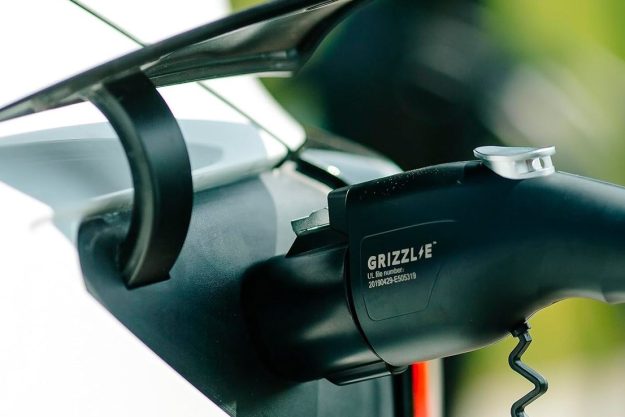It’s a good time to be a fan of high-performance cars. Tesla impressed many of us when it announced the next-generation Roadster, Dallara has introduced its very first street car, and Scuderia Cameron Glickenhaus (SCG) has just unveiled a sexy-looking coupe named 004S.
SCG isn’t a household name in the sports car segment, but it has been making waves on and off the track for the past couple of years. Remember the 003 shown in Geneva two years ago? The 004S is its smaller, less expensive sibling with a personality of its own. Visually, it looks like the child of a 1960s Italian coupe and a modern-day LMP1 race car. The shapely body work is complemented by a dome-like glass greenhouse that gives the driver a commanding view of what’s in front and next to the car.
The interior is even more striking than the exterior. The driver sits front and center while the passengers are positioned on either side, a configuration pioneered by the McLaren F1 in the 1990s. Because it’s not a mass-produced car, the 004S doesn’t need to comply with safety regulations that mandate the use of airbags, among other features. The result is a refreshingly basic-looking cabin with nine analog dials clearly laid out across the dashboard, a three-spoke steering wheel, a handful of switches, and a gorgeous gated shifter.
The 004S was designed to hit the track. Aspiring racers can order an on-board fire suppression system and a rally timer integrated into the center console. Alternatively, those who prefer to use it daily can ask SCG to add an iPhone dock right in front of the shifter.
The body and the chassis are both made out of carbon fiber in a bid to keep weight down to around 2,600 pounds. Power comes from a twin-turbocharged, 5.0-liter V8 engine tuned to pump out about 650 horsepower and 531 pound-feet of torque. The eight-cylinder — whose origins haven’t been revealed yet — spins the rear wheels via a six-speed automatic transmission, though an automatic unit with shift paddles is available at an extra cost.
SCG plans to begin testing pre-production prototypes next year, and it will start delivering the first 25 Founders Edition cars in 2019 at the latest. Its facility can build 250 cars annually, and the 004S is fully street legal because it falls under the low-volume manufacturer rules laid out last year by the National Highway Traffic Safety Administration (NHTSA). Pricing starts at approximately $400,000 before options are factored in, a figure that places it in the same ball park as big-name supercars like Lamborghini’s Aventador S.
Editors' Recommendations
- The Ford Mustang could ditch its V8 and eventually go fully electric
- Horsepower, tech, or cubic feet? Have all three in the BMW 8 Series Gran Coupe




